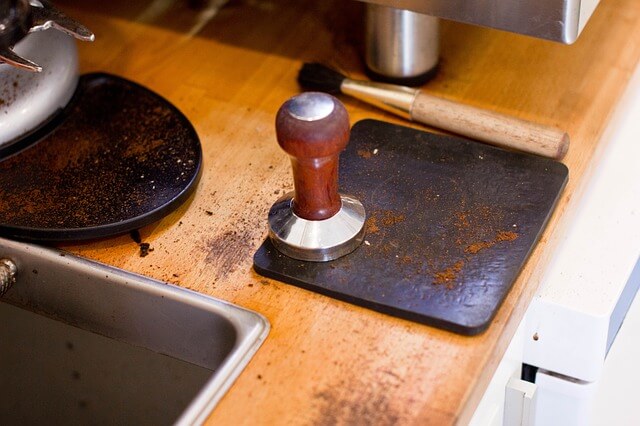Rumors are flying, so what do you do? Do you tamp them down or tap them down? If a business strategy isn’t quite working, are profits tamped down or tapped down?

Sure, you think trouble might come from uppercuts and jabs, but here’s a case when gentle tapping (or should I say, “tamping”?) causes the biggest blows—at least in terms of correct word choice.
There’s tapping on the shoulder, and there’s tamping of your coffee beans. It’s time we knew the difference.
Remember:
- “Tamping down” means to reduce or lessen, to put a check on. It can also mean to push downward by repeated soft blows. It’s this latter definition where the confusion seems to set in.
- “Tapping” has many meanings, but for the sake of this conversation, let’s just talk about its definition related to light beating or striking. “Tapping down” might be the proper wording if you are hammering a nail, but it’s not the intended word choice for all situations.
“Tapping” had its first use in the 13th century. “Tamping” as a verb, goes back to the 19th century. Clearly, one of these words has major linguistic seniority, and maybe that’s why so often people refer to “tapping down” the effects of something.
However, this isn’t the end of the story. Maybe you’ve already spotted the hole in this conversation. What about “damp down”? Where does that phrase come in? Well, I’m so glad you asked. (Or I’m so glad I imagined you did.)
It’s in the “tamp down” vs. “damp down” conversation that we find another linguistic hijacking.
The word “damp” actually has a fascinating history all on its own, with early meanings as a verb including “to choke” or “to deaden” before we reach today’s common adjective form definition of being slightly wet. But it was in the 1800s when “to damp down” picked up a new popular meaning, specifically “to dull” or “to lessen the effects of” something.
When “tamp” came to be in the 1800s, it was a verb referring to a mining technique involving pressing wet clay into bore-holes before detonation. But as the miners left the mines, the word traveled too. First, it took on a general meaning of pressing or packing, just as we think of it with coffee beans today, but then, under the influence of “damp down,” which had just increased in popularity, to “tamp down” suddenly was being used to mean “to reduce” or “to lessen.” And, clearly, this is a definition that still holds today.
Thus, to “damp down” is not actually a wrong word choice, though it is the outdated choice. To “tamp down” stole its glory. Sorry, “damp down.” There’s a wet blanket joke there if I search for it, I know it.
Is this more than you’ve ever wanted to know about the phrases “to tap down,” “to tamp down,” and “to damp down”? Maybe. But at least you now have your answer.
Join 1,000+ subscribers and sign up for my writing and editing email newsletter for more tips like this.